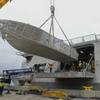In most cases, the increased premiums which shipowners are being asked to pay by their P&I clubs are justified, and are a vital factor in maintaining a solvent marine mutual market, according to Michael Butler, an insurance partner at leading business adviser and accountant, Moore Stephens.
Writing in the latest issue of the Moore Stephens shipping newsletter, Bottom Line, Butler says, “The arguments advanced in favour of lower increases – or no increases at all – encompass everything from a buoyant shipping industry to a recovering investment market. This year, in addition, they include the argument that, since most clubs are satisfied that they are well-placed to meet the risk-based Solvency II capital adequacy regime introduced in the UK by the Financial Services Authority, why do they need more money?
“In most cases, the arguments are not justified. Individual owners will always have individual issues with individual clubs, but the essence of P&I is its mutuality. And while different clubs have different philosophies on how best to use their investment returns in the interest of members, the fact remains that investment income should never be used to massage or distort underwriting results, which are the heart of P&I.
“Strong freight markets and a generally buoyant shipping industry, meanwhile, do not translate, historically, into lower P&I premiums. The more ships there are trading, the greater the scope for a potential increase in casualties. Put bluntly, more ships must inevitably mean more claims. And if the cost of meeting claims increases, then so must the premiums
“The so-called ‘churn effect’ must also be taken into account. All clubs want to get more and more modern tonnage onto their books. But old ships attract generally much higher levels of premium than new ones. With so much new tonnage on the market, and much more waiting in the yards, rating of this business will be a key issue in P&I for some years to come.
“Finally, there is the argument about Solvency II. Although it is not expected to come into effect before 2010, at the earliest, it is incumbent on the insurance industry – and that includes the P&I clubs - to familiarise itself now with the issues at stake. Almost half of the International Group of P&I Clubs will already be familiar with strict financial regulation, since they are regulated by the FSA. And FSA-regulated insurers have already been required to meet Enhanced Capital Requirements and to develop their own Individual Capital Adequacy Standards, based on principles similar to those that seem to be developing under Solvency II.
“In short, most clubs are now ready for something like Solvency II. That fact alone should serve as a singular reminder that the clubs generally are in good financial health. And if the price to be paid for that is increased premiums, it might be deemed a price worth paying.”
Subscribe for
Maritime Reporter E-News
Maritime Reporter E-News is the maritime industry's largest circulation and most authoritative ENews Service, delivered to your Email five times per week










